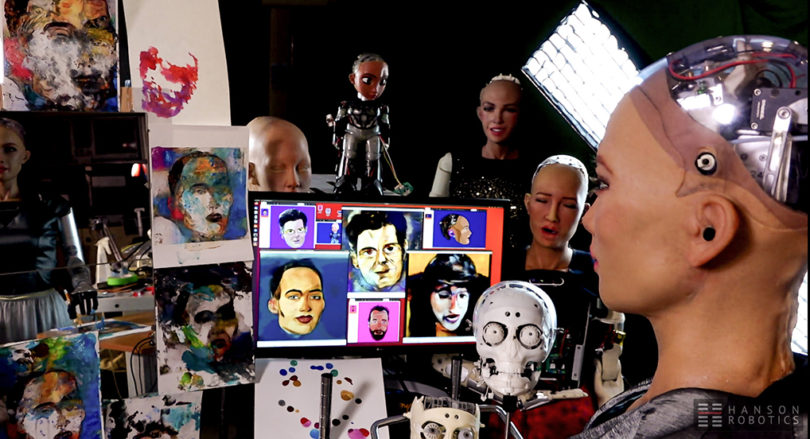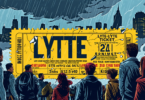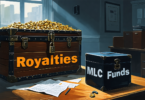Artists are always looking for ways to make financial and legal systems that usually favor collectors and dealers work better for them. This attitude has led some to experiment with non-fungible tokens (NFTs).
The technology is a digital “smart contract” encoded on a blockchain, which stipulates the ownership and resale rights for a specific digital artwork that is typically linked in the contract but hosted elsewhere. Artists see potential to ensure royalties for themselves when an artwork is resold by a gallery or at auction. They might also use the smart contract to distribute percentages of sales to lower-paid workers at their gallery, an example set by artist Sara Ludy at Bitforms.
The majority of NFTs sold thus far have been listed on platforms like SuperRare and Foundation by individual artists without gallery representation, which suggests that many artists hope to use the technology to circumvent the traditional art market altogether.
For the most part, NFT artworks have yet to demonstrate their significance as cultural artifacts. For artists, the true significance of the developing technology is in its potential to make the back-end business of studio inventory, museum loan agreements, and gallery sales contracts more transparent and more fully within their capacity to control.
Long before NFTs, many artists used alternative financial instruments and legal documents to assert control over their market, for both practical and artistic reasons. Yves Klein’s Zones of Immaterial Pictorial Sensibility (1962) is a key example.
Klein sold empty space which he priced according to the physical displacement of air by ingots of pure gold—the only form of payment he accepted for the work. Klein intended the piece to become nonexistent; it was represented by receipts, which buyers were instructed to burn.
Half the gold paid to the artist would be deposited in the Seine as part of the transfer. Ultimately, the only evidence of the artwork’s existence would be a note in a ledger. Lawrence Weiner’s wall works consist of replaceable stencils, removable installations, and irrevocable certificates of authentication.
Christo and Jeanne-Claude sold derivative works to raise funds for monumental temporary public projects, transferring the financial value of their art to multiples that give buyers a sense of ownership.

Mitchell Chan’s Digital Zones of Immaterial Pictorial Sensibility (2017) is a series of “empty digital spaces imbued with an immaterial artistic sensibility” that he sold as ERC-20 compliant tokens using an earlier iteration of the Ethereum blockchain (ERC-721 is the current standard).
The project engages Klein’s inquiry into immateriality to highlight the system that creates value for cryptocurrency, which determines scarcity through the limits of algorithms rather than the finite amounts of metal in mines. Chan offers the ineffable: uncolored digital frames that he characterizes as having “a pure blankness” but with the energetic reference of the color blue, which he associates with International Klein Blue (IKB), the color of the cover of the receipt books Klein used to record the sales of his zones.
IKB remains under copyright to the artist’s estate, so Chan developed his own shade to stand in. “To research a suitable blue sensibility for this project, I travelled to the north coast of Prince Edward Island, and created studies of different shades of blue present on the horizon where the Atlantic Ocean and sky converge,” he wrote in an accompanying statement, titled “The Blue Paper.” Tinted with Chan’s new signature shade, it is a riff on the white papers that introduce new types of blockchain assets.
Each of Chan’s “IKB tokens” is worth a specific amount of Ethereum currency, with series 0 priced at 0.1 ETH and prices of subsequent series increasing exponentially (series 7 is priced at 12.8 ETH). Sales are documented using a smart contract that allows for purchasers to remain anonymous, limits the number of tokens sold to 101, and tracks the provenance of each NFT through subsequent resales.
There was little interest in Chan’s project when it first appeared four years ago, but it sold out at the onset of the NFT craze in February 2021. On April 27, he released a new series, using an existing contract architecture for the work that predates the platforms like OpenSea and Nifty Gateway that artists and collectors now use to distribute and access works on the Ethereum blockchain.

Processes of financialization have not only replaced art objects with legal agreements but also situated the artwork as both a speculative instrument with a monetary value that can be manipulated and a relatively safe place to hold assets, since art’s value rarely declines.
Marcel Duchamp explored this apparent contradiction in his 1924 print edition Monte Carlo Bond. The mixed-media letterpress and photographic print bears a cutout of Duchamp’s face covered in soap suds with his hair sculpted into devil horns, photographed by Man Ray.
This image is set in a roulette wheel, and a gambling table covers the ground. The right column bears hand stamps acknowledging the bond’s purchase and transfer. Eight numbered bonds that reflect legal obligation were issued, giving buyers shares in Duchamp’s “company.” The bonds, each worth 500 francs and payable in three years at 20 percent interest, were intended to finance Duchamp’s gambling, which he framed as experiments with chance.
The bonds were worthless as financial instruments, as they came with the guarantee that Duchamp would lose all the investment capital at the roulette table, but they still possess theoretically limitless value as artworks. Bond #22 sold at a 2020 Sotheby’s auction in London for approximately $685,000, and Bond #30 fetched $2,405,000 at a 2015 Christie’s auction.
One of the more innovative uses of NFT is as a way of building micro-investment in creative projects that are difficult to fund in traditional ways. Recently, NFTs associated with artworks by the android Sophia, a creation of Hong Kong-based Hanson Robotics, were auctioned on Nifty Gateway. Sophia Instantiation fetched $688,888. Sophia’s creator, artist and roboticist David Hanson, and his team taught the android how to paint by introducing examples of historical and contemporary art into her neural networks, and programming her motor functions to operate a brush.
Hanson also added Sophia’s own early painting attempts into the data set, to help her develop a distinct personal style. The process of conceiving works became iterative, too. “Sometimes the neural networks were generating images on the basis of words,” Hanson said in an interview, “so you put in the word that generates the image back into the neural network, along with Sophia’s own drawing.”
He has exhibited Sophia and other androids at museums, but he finds the budgets offered by art institutions insufficient to support his research. With financing for experimental science also becoming scarce, Hanson is using NFT sales to raise capital.

A significant obstacle to the ubiquity of NFTs is the questionable legality of cryptocurrency networks. Smart contracts may not be enforceable in court.
Right now, whoever mints the NFT associated with an image asserts ownership of its digital rights, whether the minter has an actual copyright interest or not. An artist who thrives in the legally contentious space of appropriation, Richard Prince has minted NFTs of his “New Portraits” series (2014), for which he printed other people’s Instagram posts as his own work.
Art critics Jerry Saltz and Kenny Schachter created a Beeple-style composite image from Saltz’s social media feeds, which included their own version of a contested Prince image of the singer Kim Gordon, the subject of a lawsuit filed by photographer Eric McNatt. While a smart contract may theoretically offer greater protections to the artist, it can only be enforced by someone with the resources to pursue legal action, just like any other contract.
Artists turning to NFTs for an alternative to gallery-based art sales will find that lack of regulation and unclear ownership of intellectual property in the traditional art market are problems that the blockchain exacerbates rather than eliminates. Still, many artists recognize that NFTs are already affecting the sale and valuation of art by driving a speculative market for digital works that previously did not fit comfortably into art world systems of distribution and exchange.
As legal precedents are tested and technologies evolve, we are already seeing the impact of NFTs extend to the sale and circulation of physical art objects as well. For artists who feel comfortable dedicating some time and effort to an experimental, not-yet-proven platform, NFTs are an intriguing way to redefine their relationship to the market.
Sourse: Artnews







